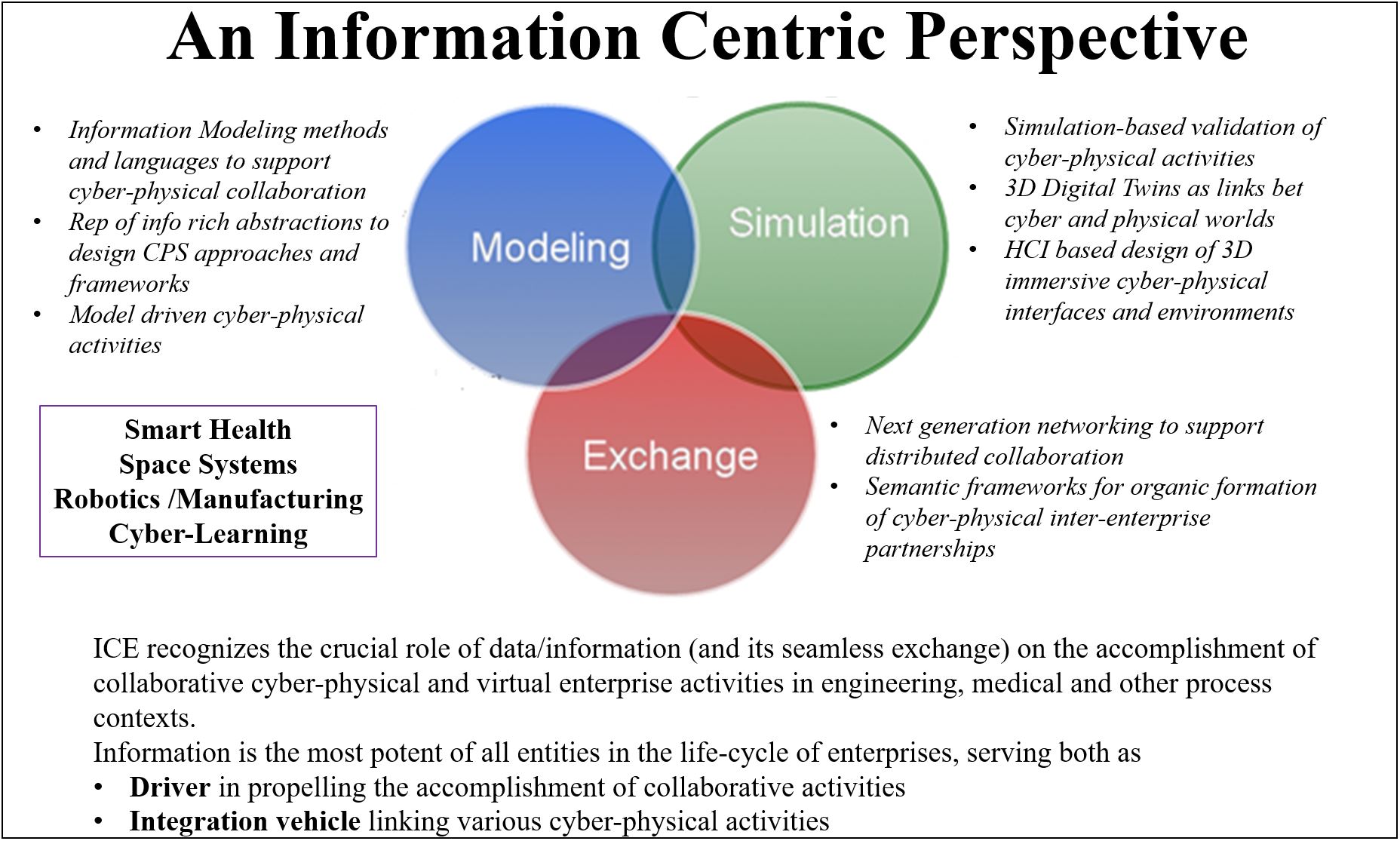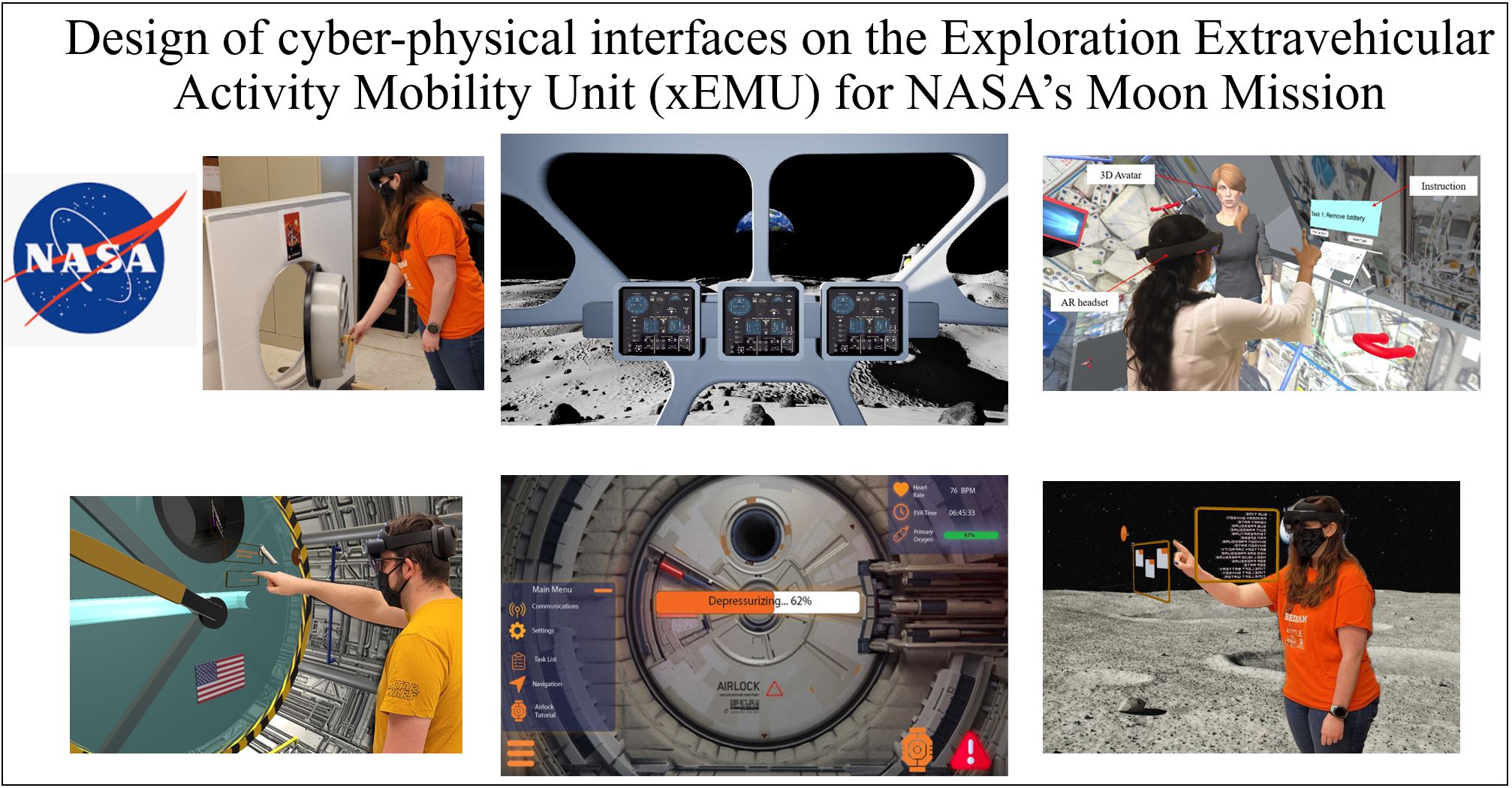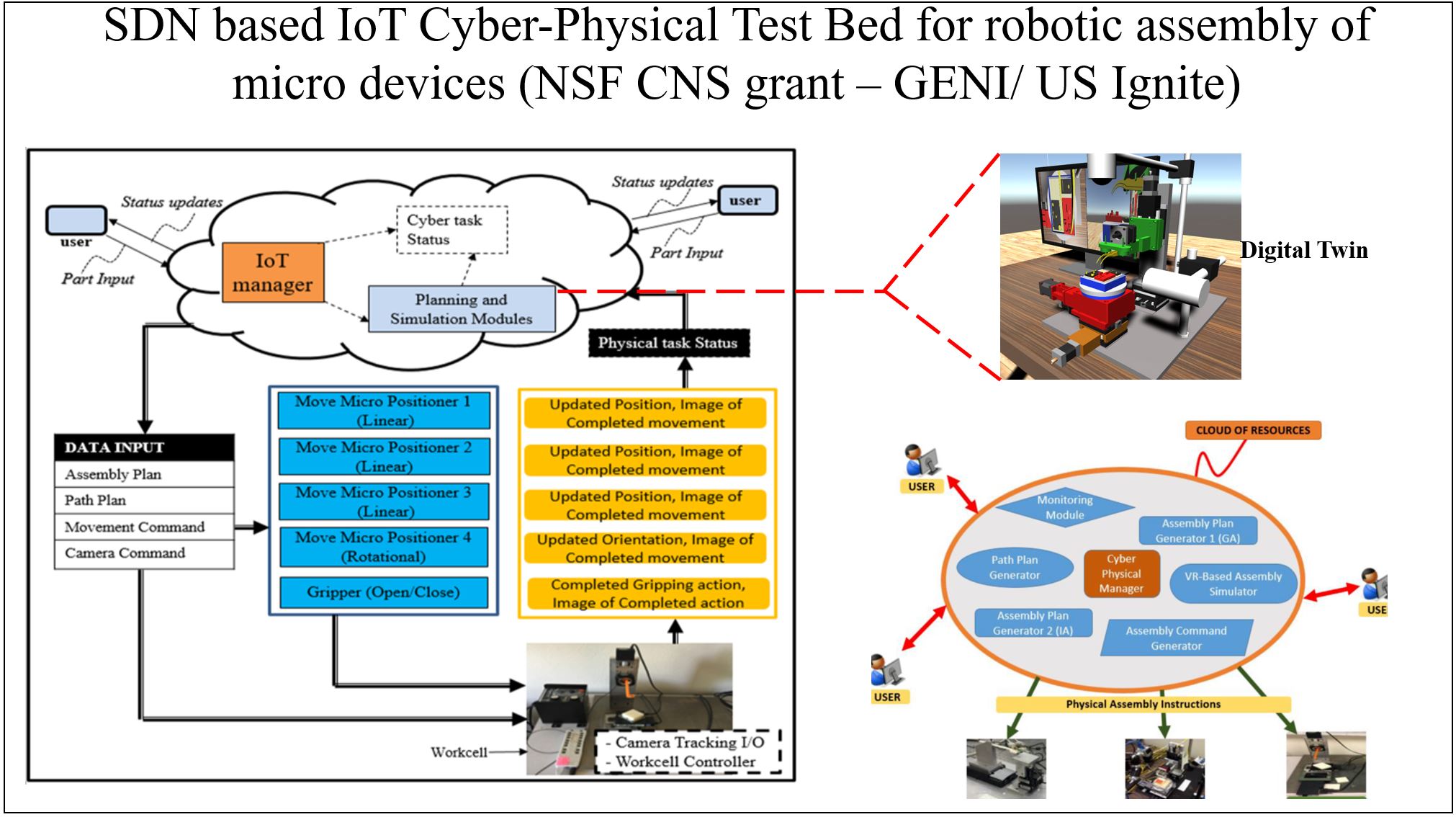Dr. J. Cecil - Profile
NOTE: for some reason there are 2 Google scholar pages for Dr. Cecil.
The correct Google scholar link is Click Here
The following link appears to be a second link with incorrect data. Dr. Cecil is unable to delete this page. Click Here
RESEARCH THRUSTS
My primary research interests can be broadly described as investigation of information centric cyber-physical approaches across various process domains: Smart Health/Medicine, Deep Space Colonization and Space Systems, Robotics / Manufacturing and Cyber Learning. This information centric perspective can be delineated as a triumvirate of broad thrusts dealing with issues in Modeling, Simulation and Exchange of Information. Specifically, my research has dealt with the following foci:
-
-
- Design of IoT / Cyber-Physical frameworks for collaborative engineering and healthcare
activities
- Investigation of the roles of Extended Reality (VR/MR) environments as links between cyber and physical worlds
- Methods to support design of 3D immersive digital twins within cyber-physical frameworks
- Next generation networking to support Extended Reality based collaboration in CPS
- Software Defined Monitoring and Control of collaborative process activities
- Semantic frameworks to support cyber-physical interactions
- Future of work at the Human-Technology frontier
- Human Computer Interaction (HCI) based design of collaborative cyber-physical environments
- Design of cyber-physical environments to support STEM+C Learning for autistic communities
- Information Modeling methods and languages to facilitate collaboration and model driven
cyber-physical activities
- Representations of Information-rich process abstractions to design life cycle of cyber-physical collaboration for smart health and robotic assembly
- Design of IoT / Cyber-Physical frameworks for collaborative engineering and healthcare
activities
-
The above thrusts have been explored through a cross-section of interdisciplinary projects (funded by NSF, NASA, DoD and other agencies), which have been disseminated through 50 refereed journal papers and 99 refereed conference papers.
Smart Health and Medicine
Our focus is on the design of VR/AR based simulators to help train medical residents in surgery, the design of Internet-of-Medical-Training-Things (IoMTT) frameworks and the role of information modeling in designing such collaborative approaches and frameworks.
Design of Cyber-Physical Frameworks, Approaches and Environments for Deep Space Missions
The third focus is on exploring novel ways to design satellite and space systems addressing a range of issues including rapid assembly, concurrent engineering based design, manufacturing automation frameworks. The design of immersive 3D simulation environments (created using VR/Mixed Reality technology) is of interest as well. Our current projects deal with exploring training NASA astronauts to perform various tasks aboard the planned Gateway as part of NASA’s Moon Mission (Artemis program). Other initiatives have explored the robot based automation of habitats on the Lunar Surface and the creation of 3D VR based environments to support analysis and assembly of small satellites.
Robotics and Cyber Manufacturing Thrusts
(a) Creation of SDN based Internet-of-Things (IoT) / Cyber Physical frameworks to support distributed collaboration in robotics and manufacturing
(b) Design of Virtual Reality /Augmented Reality based Simulation environments as a cyber-physical link supporting integration of distributed cyber (software) and physical (manufacturing/robotic) resources
(b) Design of Cyber (Digital) Manufacturing Collaborative Frameworks and Techniques for agile manufacturing contexts
(d) Exploring Semantic Web based approaches to support cyber physical robotic assembly
CURRENT PROJECT ACTIVITIES
Exploring the Design of a Network based Simulation Environment for Orthopedic Surgery Training
Dr. Cecil is leading an initiative to design a distributed VR based simulation environment for training medical residents in orthopedic surgery. This research also explored the feasibility of adopting Software Defined Networking (SDN) approaches to support simulation based training interactions involving distributed users, which helped support low latency.One of the thrusts is the adoption of Human-Computer Interaction (HCI) principles for the design, development, and evaluation of a complex cyber-human framework for surgical training. The specific surgical domain of interest is LISS plating surgery, which is a procedure to treat fractures of the femur bone. Assessment of learning and acquisition of surgical skills is ongoing involving medical residents and surgeons at partner medical universities in New Mexico and Arizona. Initial findings indicate that such VR/haptic based environments help residents’ acquire surgical skills and knowledge The simulation based training environments are being created using both immersive and haptic based platforms.
CYBER-PHYSICAL FRAMEWORKS IN SPACE SYSTEMS
Extended Reality based user interfaces can play a key role in the cyber-physical training of astronauts for the Moon Mission especially involving service activities on the Gateway. This NASA X-Hab project involves the adoption of Mixed Reality based digital mockup techniques and technologies to support 2 thrusts related to astronaut training in the context of the Gateway: (1) training to perform service operations involving computers and processors (2) training to move payloads to storage locations within the Gateway. Two platforms are being used in the design of these training simulators: HTC Vive™ and Microsoft HoloLens™. The cyber-physical environments were created using Unity 3D engine and C# programming tools. Human-Computer Interaction (HCI) principles were adopted in the design of the cyber-human simulation environments. These activities are part of NASA’s X-Hab Challenge initiative involving the Artemis Moon Mission (which seeks to land the first woman on the Moon in 2024). Project teams interacted with NASA Ames and NASA Stennis Center as part of this project. A view of the cyber physical validation environment which is being created to validate the AR based training environments is shown in the adjacent figure.
A gigabit Network and Cyber-Physical framework for Robotics Assembly and Advanced Manufacturing
In this NSF Cyber Manufacturing project, Dr. Cecil and his students have designed and built one of the first Internet-of-Things based cyber physical test beds. The process domain involves the assembly of micron sized devices using distributed cyber and physical resources linked through Software Defined Networking (SDN) and cloud technologies. Several key milestones have been achieved in this project including demonstrating the feasibility of such emerging SDN principles to support 3D Virtual Reality based simulation interactions among distributed engineers. One of the key thrusts is exploring the design of such cyber physical frameworks using information modeling approaches. Another characteristic of the proposed approach is the emphasis on virtual/augmented reality environments and their role as a critical link between cyber and physical components. For more information, https://vrice.okstate.edu/content/gigabit-network-and-cyber-physical-framework
Robot based Assembly of Habitats on the Lunar Surface
In this initiative, we are exploring the automation of manufacturing and assembly tasks using robots and smart manufacturing resources on the Lunar Surface. One of the thrusts within this activity is the design of robot based automated assembly of habitats for astronauts to live and work. A key innovation is the design of VR/AR based simulation environments to support the study of such automated alternatives using NASA’s Robonaut2 and other tools/equipment. A view of this environment is shown below. The role of Genetic Algorithms to support assembly planning and task sequencing is also being investigated.
Exploring the design and impact of Virtual Learning Environments for children with Autism
This educational research project (involving Dr. Cecil) focuses on exploring the role of Virtual Learning Environments (VLEs) in supporting science and engineering learning for children with autism. The STEM topics include introduction to manufacturing and assembly, robotics, density and other related areas.
Autism and Autism Spectrum Disorders (ASD) are general terms for a group of complex disorders of brain development. Autistic children and teens exhibit certain characteristics in varying degrees including difficulties in verbal/ non-verbal communication, social interaction and repetitive behaviors. The VLEs are being created using emerging Virtual Reality technologies in collaboration with Dr. Mary Sweet-Darter (an educational psychologist). As a part of learning activities, three types of VLEs are being developed: non-immersive, immersive and haptic based environments to teach autistic students STEM concepts. The initial assessment results underscore the usefulness of such VLEs to support STEM learning for children with autism. Additional research is continuing involving elementary, middle and high school students. A view of one of the assembly learning modules is shown below.
AWARDS AND RECOGNITION
- 17 NSF grants (PI)
- 149 refereed publications
- 2020 NSF Presidential Award for Excellence in Science, Mathematics and Engineering Mentoring
- Recognized as one of Top 20 Academics in Smart Manufacturing (2021, SME)





